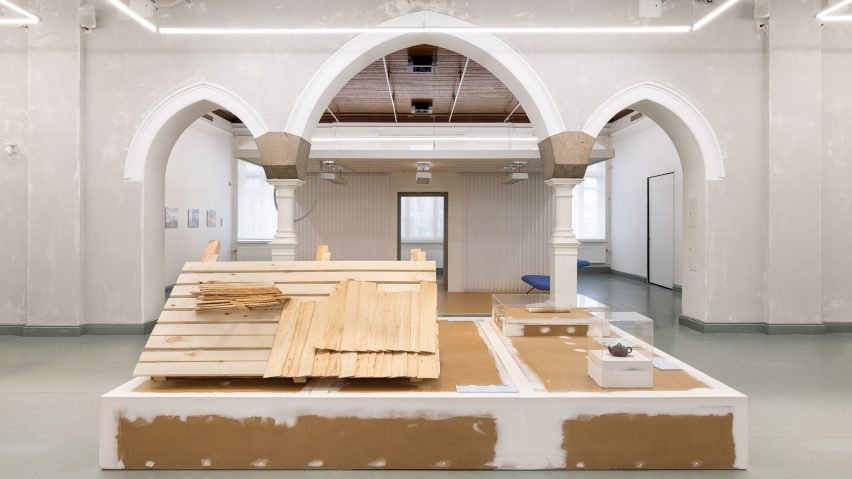
Five objects that tell stories of "care and repair" from Helsinki exhibition curators
Acts of mending and maintenance are the subject of the Fix: Care and Repair exhibition in Helsinki, Finland. Here, its curators share five works that shed light on a rarely celebrated topic.
The Fix: Care and Repair exhibition brings together objects and artworks that tell a story about shifting social attitudes towards repair.
"The way we treat broken objects reveals something about us and our society," said co-curator Kaisa Karvinen. "Do we consider repairing real work? Do we consider a repaired object beautiful? Do we prefer to repair something, or do we throw it away and replace it with something new?"
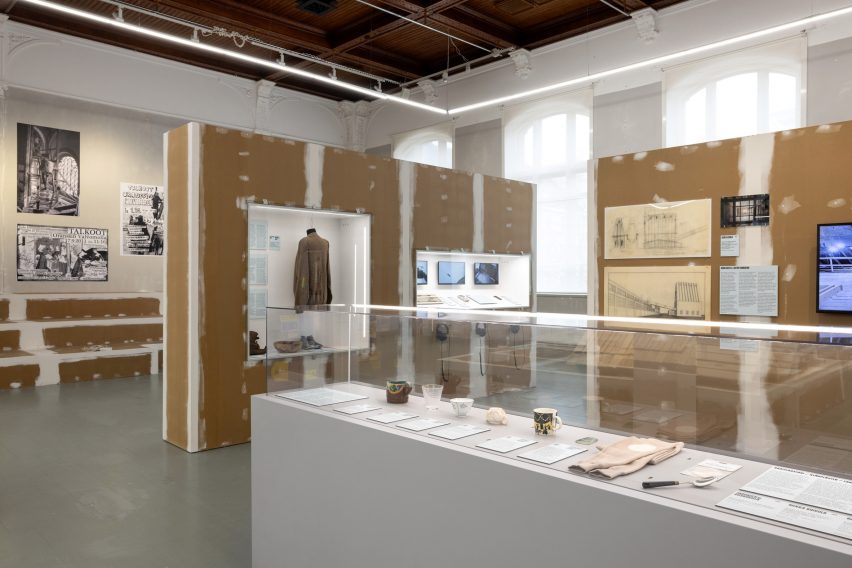
The exhibition is the first to bring together curators from both the Museum of Finnish Architecture and the Design Museum Helsinki, which merged at the start of this year and will soon share a new building on the city's South Harbour.
Karvinen told Dezeen that the curators' thinking during the exhibition development was influenced by the work of two writers, Shannon Mattern and Hilary Sample.
Mattern argued for the need to make care and maintenance – instead of innovation – our dominant way of thinking about the world, while in her book Maintenance Architecture, Sample made the case for maintenance as a part of architecture.
However, choosing what objects to display to explore these ideas was not straightforward, and the curators had to take some unconventional approaches.
"When you are working with practices like work and labour that are not only about materials and objects, we have a challenge of how to bring these ways of doing into the museum," said Karvinen.
The curators' approach has involved commissioning several new artworks to frame the topic. They have also sometimes exhibited objects that are not just mended but broken or dirty.
"We wanted to question this idea of only exhibiting things that are clean and bright and novel," said Karvinen. "We have things that are broken or dirty or full of patina."
Karvinen and her co-curators Jutta Tynkkynen and Sara Martinsen share their insights about five objects from the exhibition below:
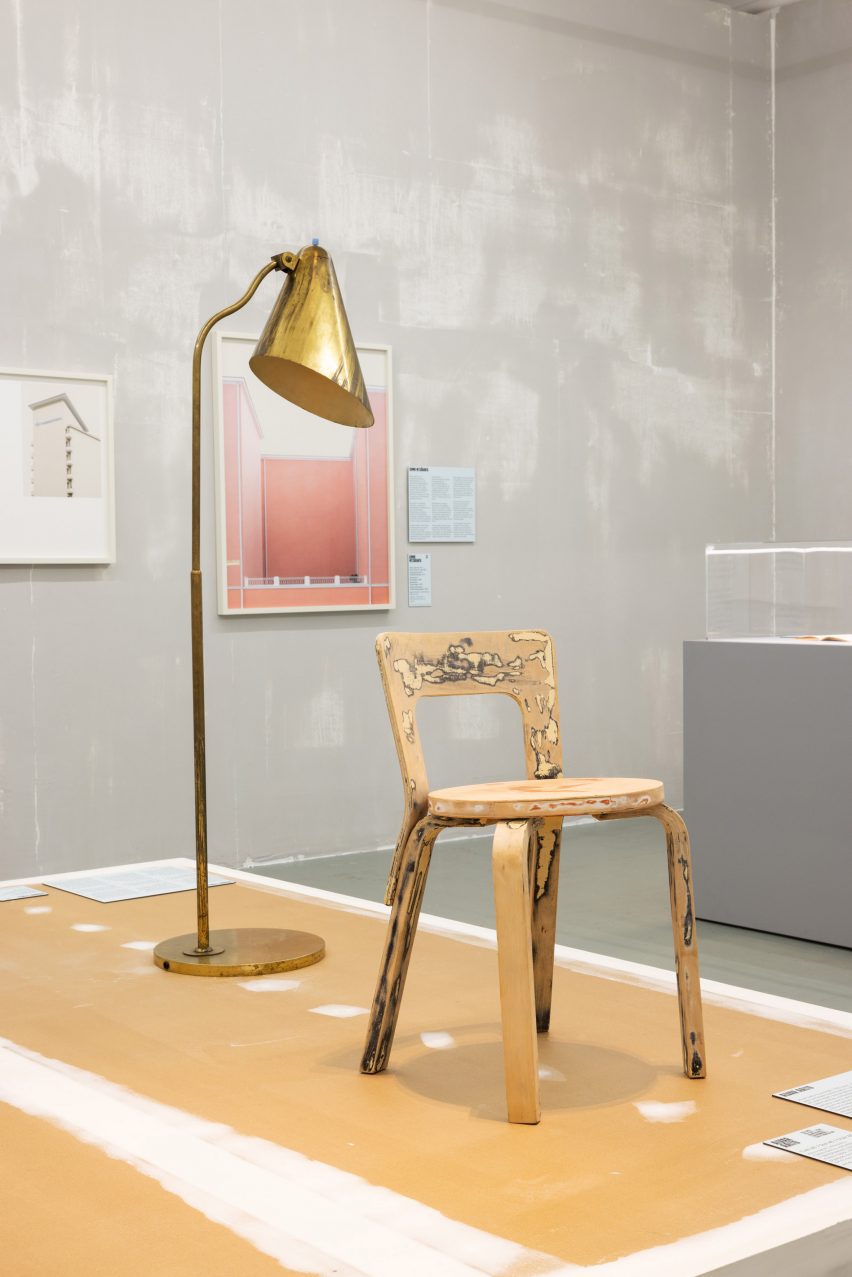
Alvar Aalto's Chair 65, restored so that the varnish has come off, 1935
"In 1935, Alvar Aalto designed the Chair 65. Aalto used it in various buildings he designed, for example in Vyborg Library, completed that same year. Looking at this chair from the 1950s, one can consider what the critical point regarding the wear of such a utility object may be.
"Is the tactile sensation of a used chair different from that of a brand-new chair? Is the goal of restoring a mass-produced chair to return it to its former state, or is some imagination allowed? Will the incomplete restoration and unsanded paint chips spoil the design classic, or does 'accidental art' make the chair unique?"
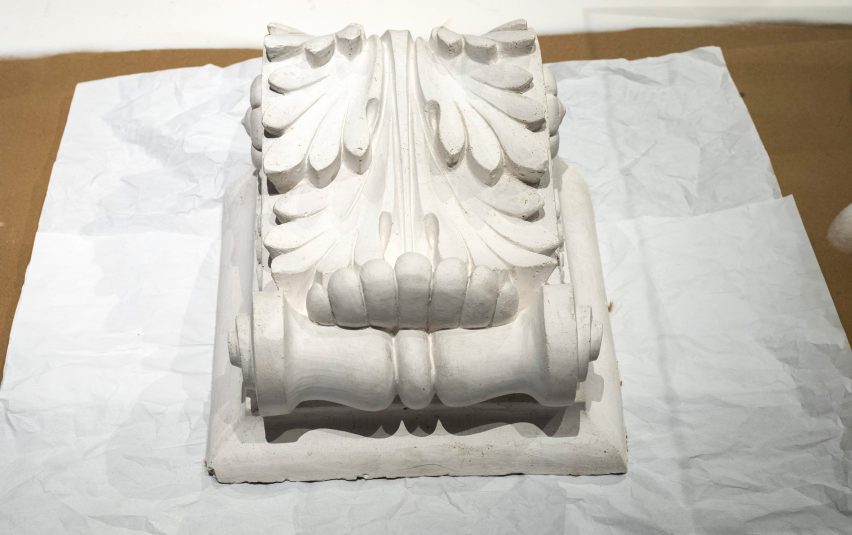
Plaster copy of the decorative volute of the main door from the Museum of Finnish Architecture building, 1980s
"The Museum of Finnish Architecture and the Design Museum Helsinki, with their internationally unique collections, merged in early 2024. The Museum of Finnish Architecture, established in 1956, has a long history of recording the creative process of architects' work.
"The museum has extensive collections of drawings, photographs and scale models. It is, of course, not possible to store entire buildings in collections due to their large size. Nevertheless, the museum owns some building fragments.
"These parts come from the current Museum of Finnish Architecture building at Kasarmikatu 24, which was completed in 1899. Before becoming a museum, the building housed the University of Helsinki's Department of Physical Education and, before that, the original user, the Federation of Finnish Learned Societies. Some of the pieces are plaster spare parts made in connection with the renovation of the museum building in the 1980s. They were cast in case the decorations were damaged during the renovation."
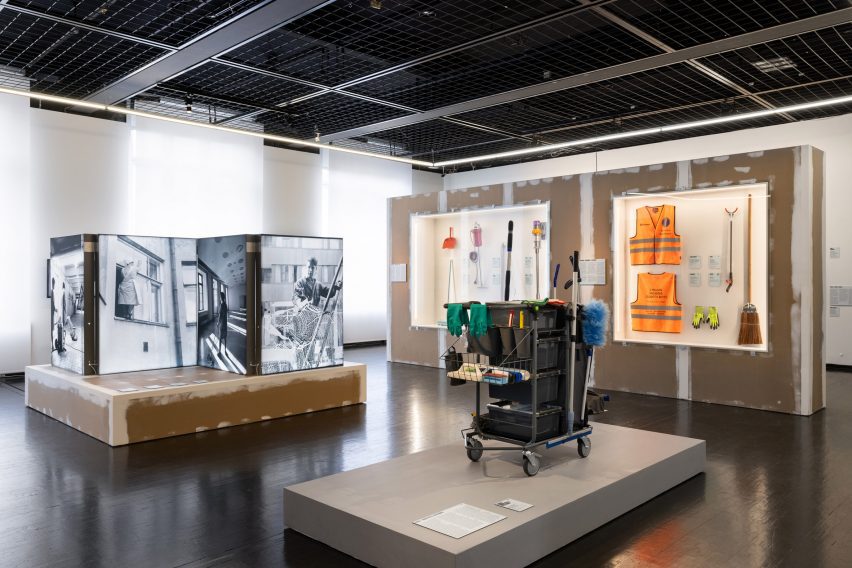
Cleaning cart used to clean the facilities of the Museum of Finnish Architecture, designed by Ilkka Pilto and Petri Rekola, 1994
"From the outset of the curatorial process, we recognised the critical importance of engaging in dialogue with maintenance and repair professionals. Consequently, we collaborated closely with the museum's cleaning staff.
"The nature of cleaners' work places them at the immediate intersection of architecture and design. Maintenance and upkeep processes, including the cleaning of spaces and objects, are vital for the preservation of our environment and material world. They are intertwined with crucial questions of sustainability and, as such, deserve the same recognition and respect as design work.
"To symbolise the cleaning personnel's simultaneous presence and invisibility in our daily lives, we selected the humble cleaning cart. Its functional design serves as a reminder of our colleagues who diligently maintain the tidiness of our shared spaces. Moreover, the abundant equipment of tools and chemicals the cart carries acts as an emblem of the vast knowledge their profession entails."
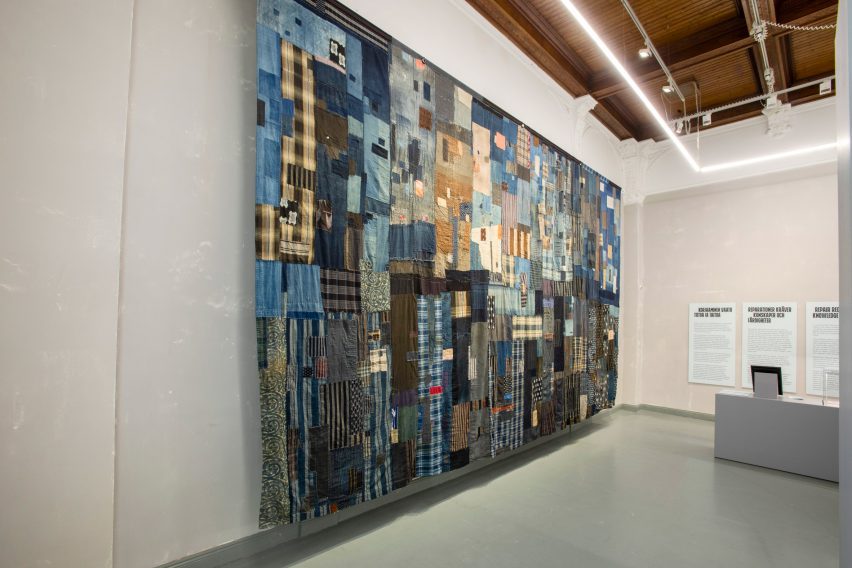
Inheritance by Takao Momiyama, 2006–2023
"Textile artist Takao Momiyama uses the Japanese sashiko technique in his work. Sashiko is a traditional sewing and mending technique where different fabrics are sewn together in layers with needle and thread.
"The fabrics are quilted together with running stitches that form geometric patterns and cover the entire surface. The air trapped between the fabric layers makes the textile warm. The edges are often left unturned and raw."
"Mariyama says: 'The technique carries with it an understanding of how important it is to take care of items and things. Care takes time, and it is done by sewing with slow stitches. Repairing and patching layer by layer is the opposite of disposable culture.'"
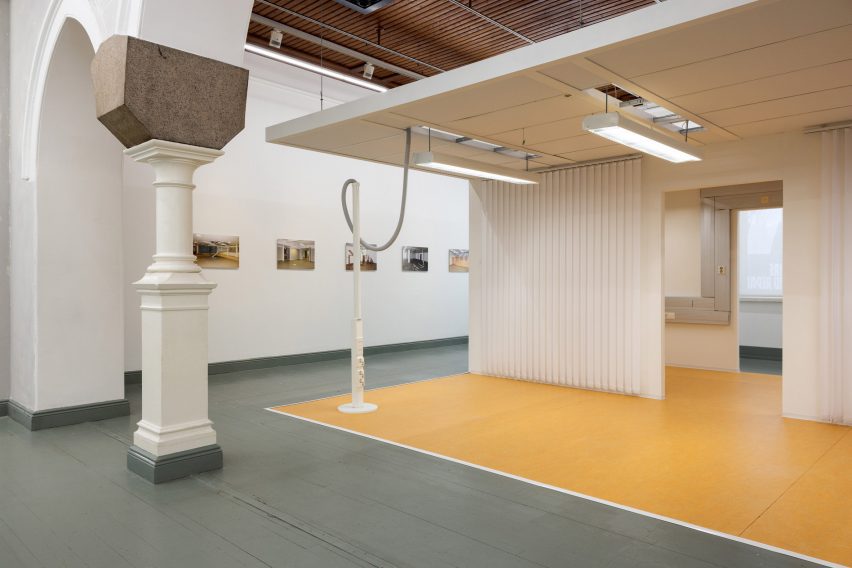
Inventory installation by Liisa Ryynänen, commissioned by the museums, 2024
"While creating this piece, architect and artist Liisa Ryynänen collected building parts from buildings that are under demolition in Helsinki and assembled them into an installation. Together, these mundane and shabby ceiling panels, electrical conduits and curtains build a miniature temple in the Design Museum's small exhibition hall.
"In the exhibition, Liisa's work represents a space at a realistic scale that visitors can enter. The office aesthetics of the piece create a contrast with the architecture of the museum building, which was originally designed as a school in the late 19th century.
"Ryynänen's work poses a question regarding the valuation and repair of buildings: Why do we see the mundane building parts added by users themselves as ugly waste that destroys the original building? How could we learn to approach familiar and everyday material parts of buildings as materials that embody energy and work? Could we learn to see a dropped ceiling as beautiful?"
Fix: Care and Repair is on show from 26 April 2024 until 5 January 2025 at the Museum of Finnish Architecture and the Design Museum Helsinki. For more events, exhibitions and talks in architecture and design visit Dezeen Events Guide.